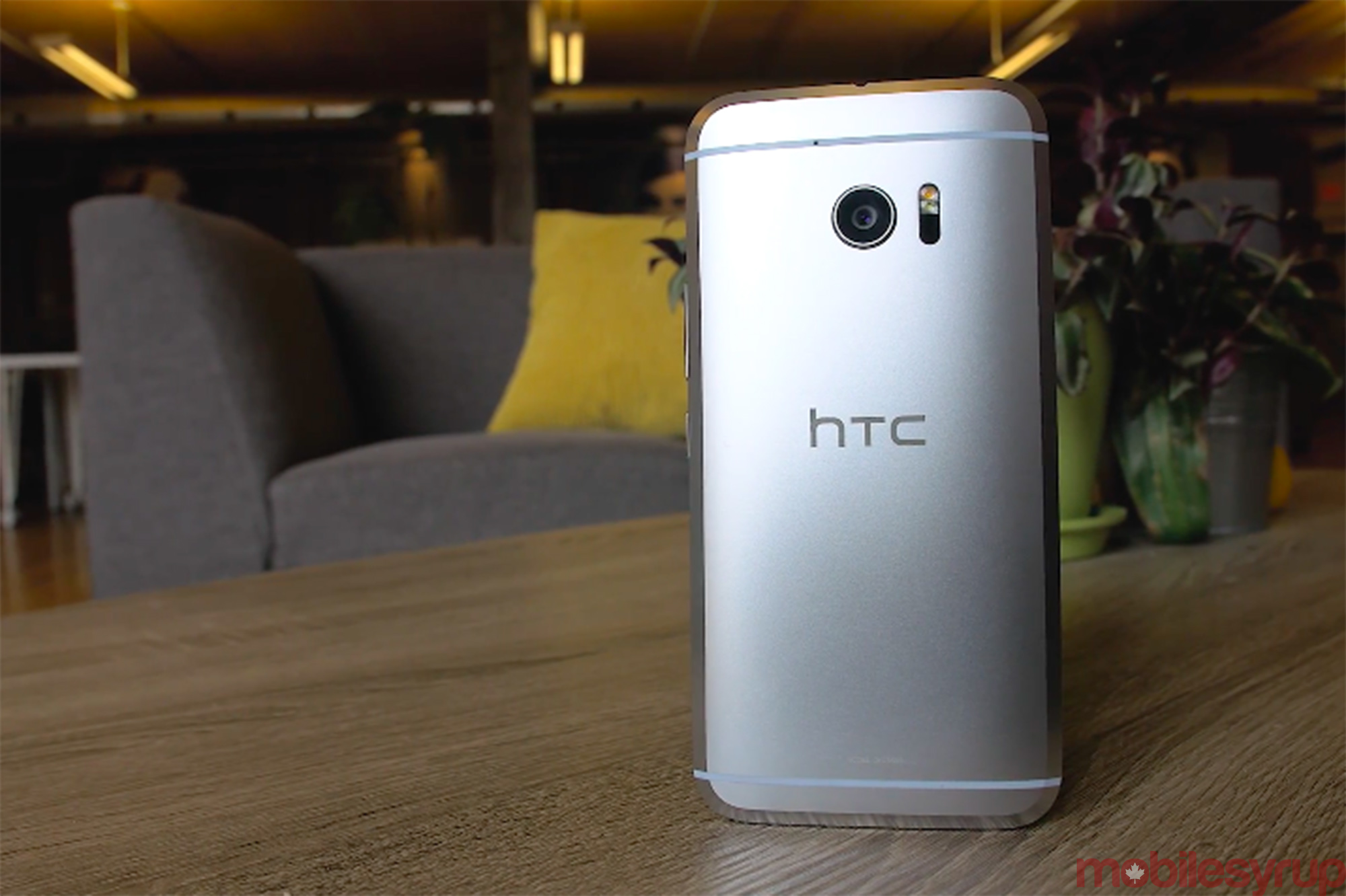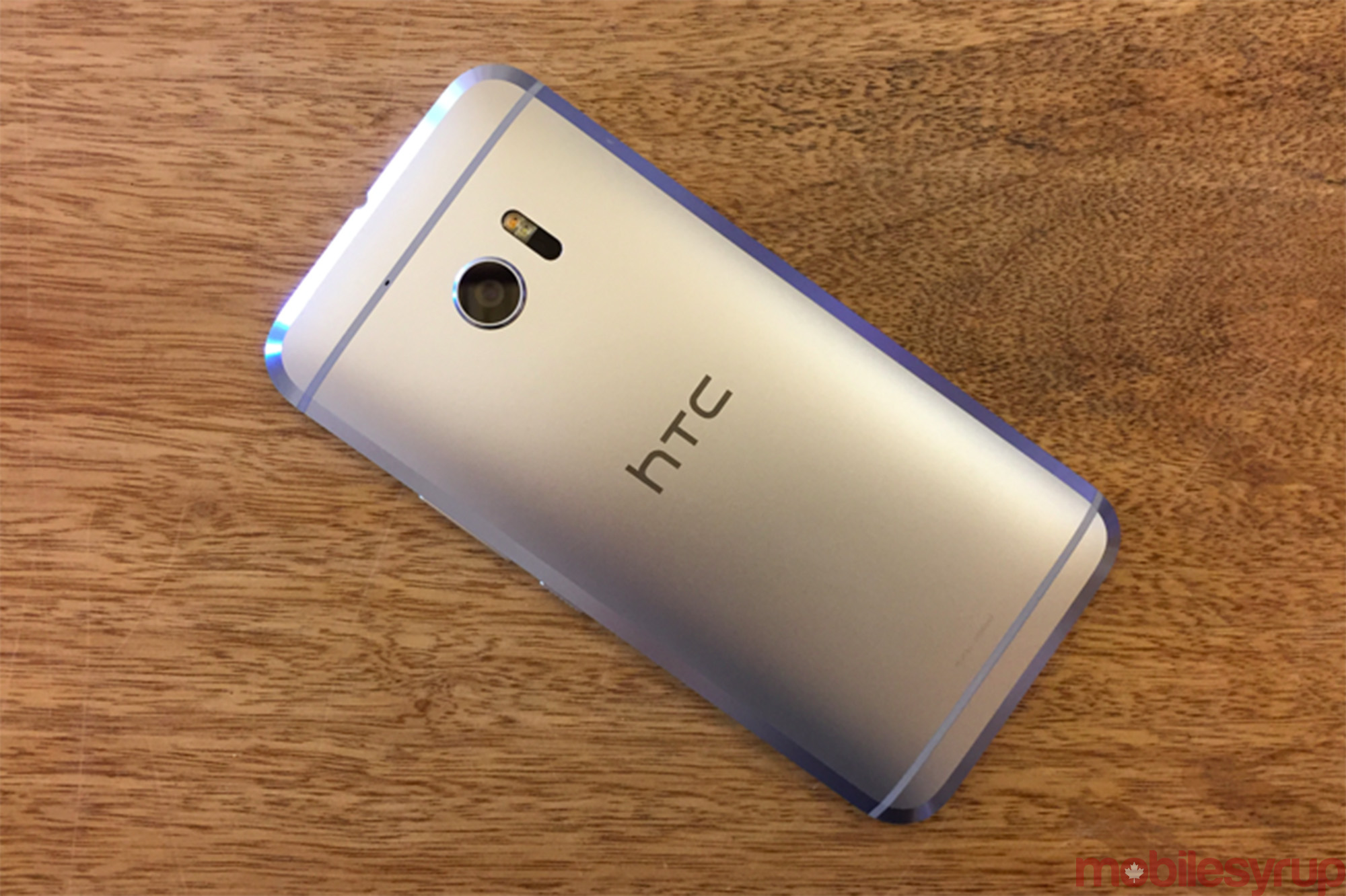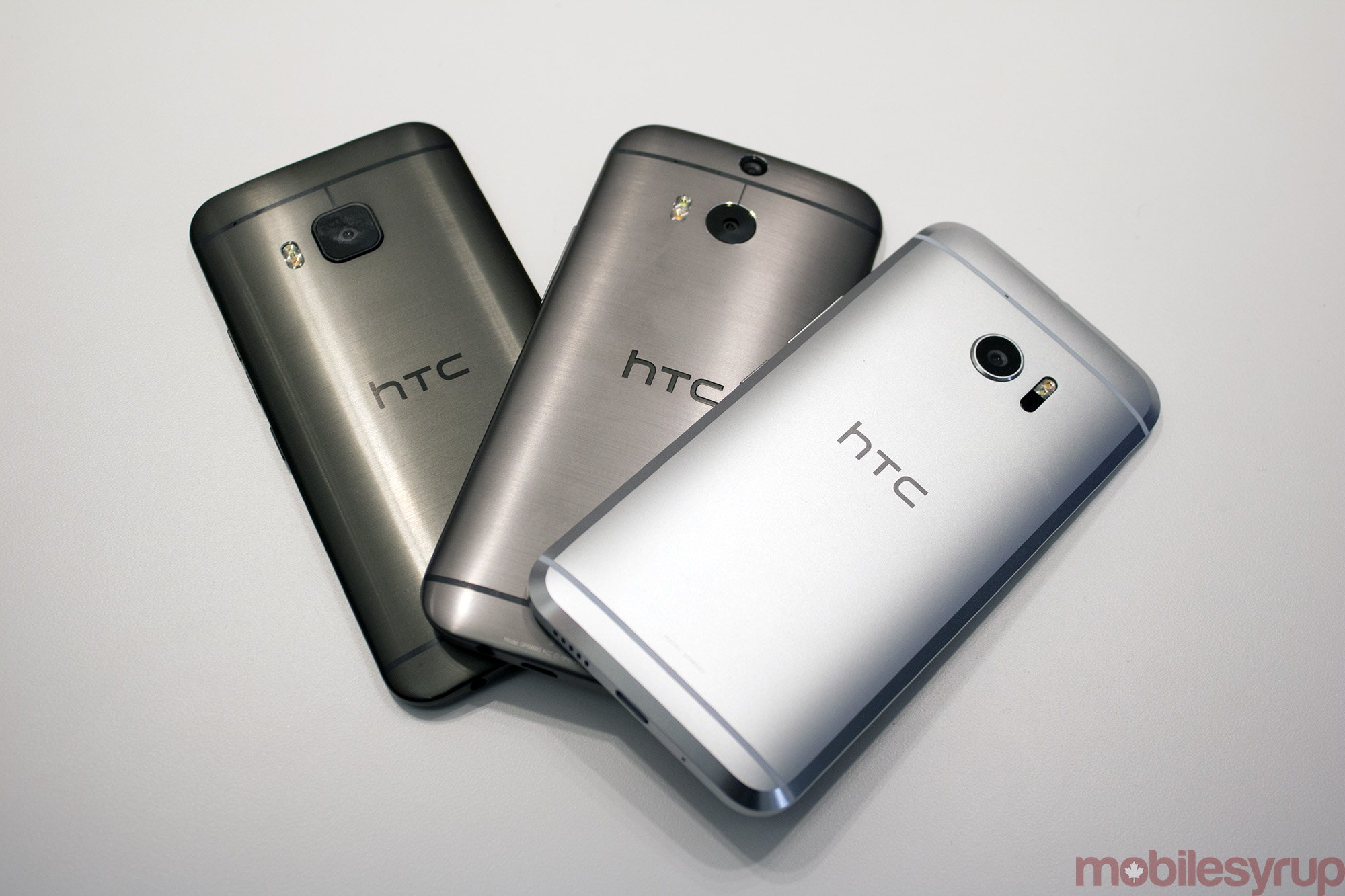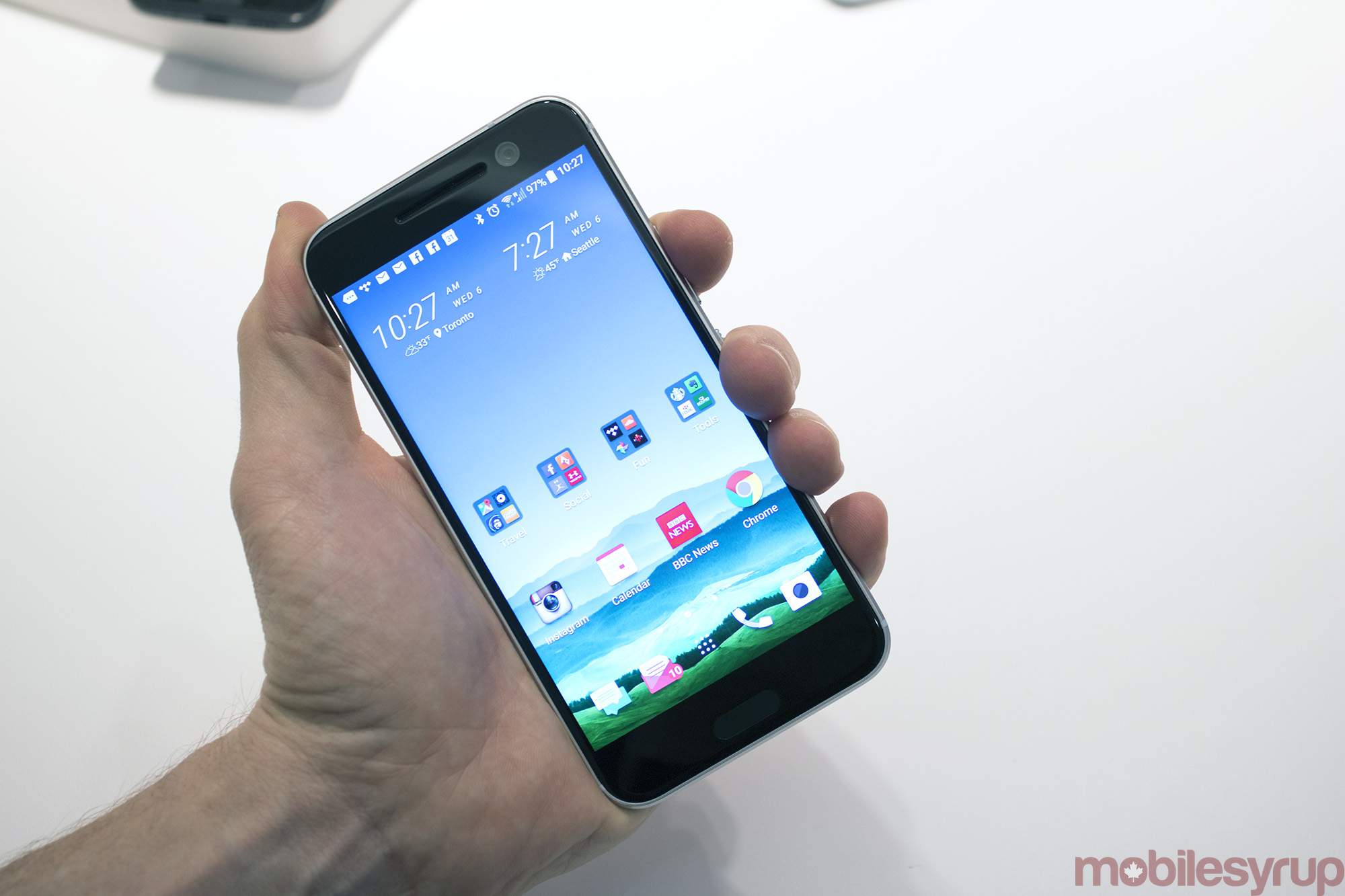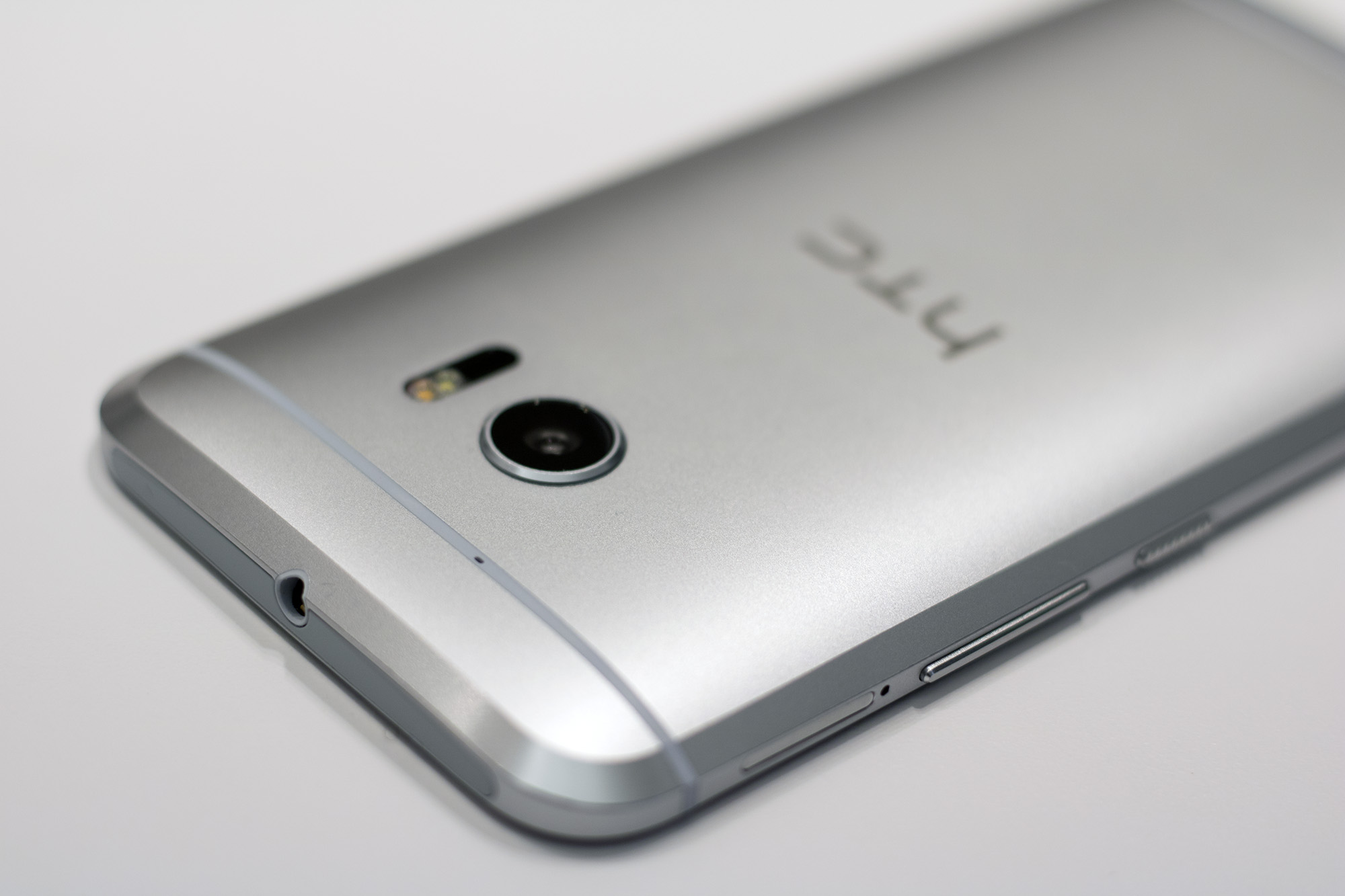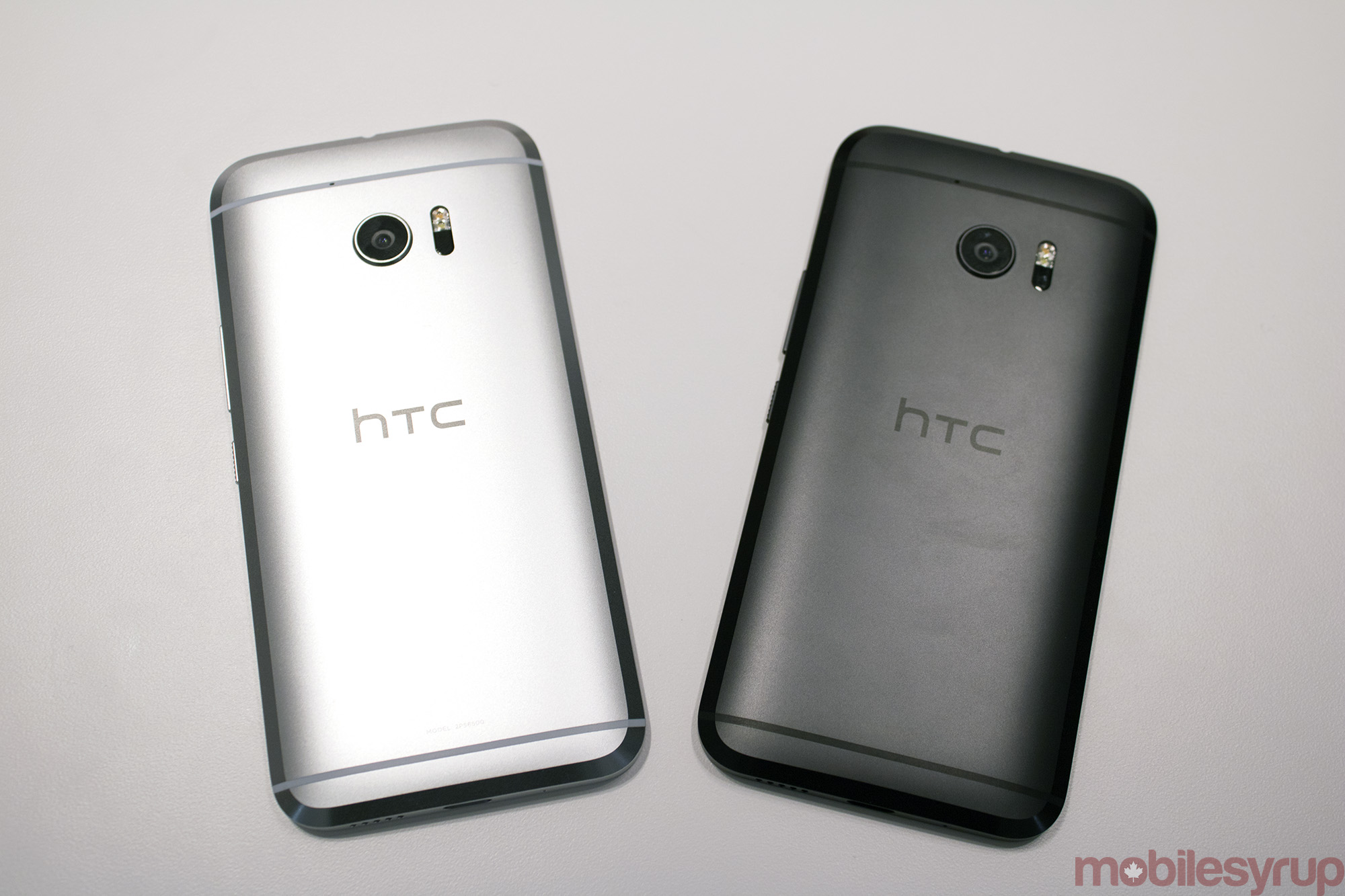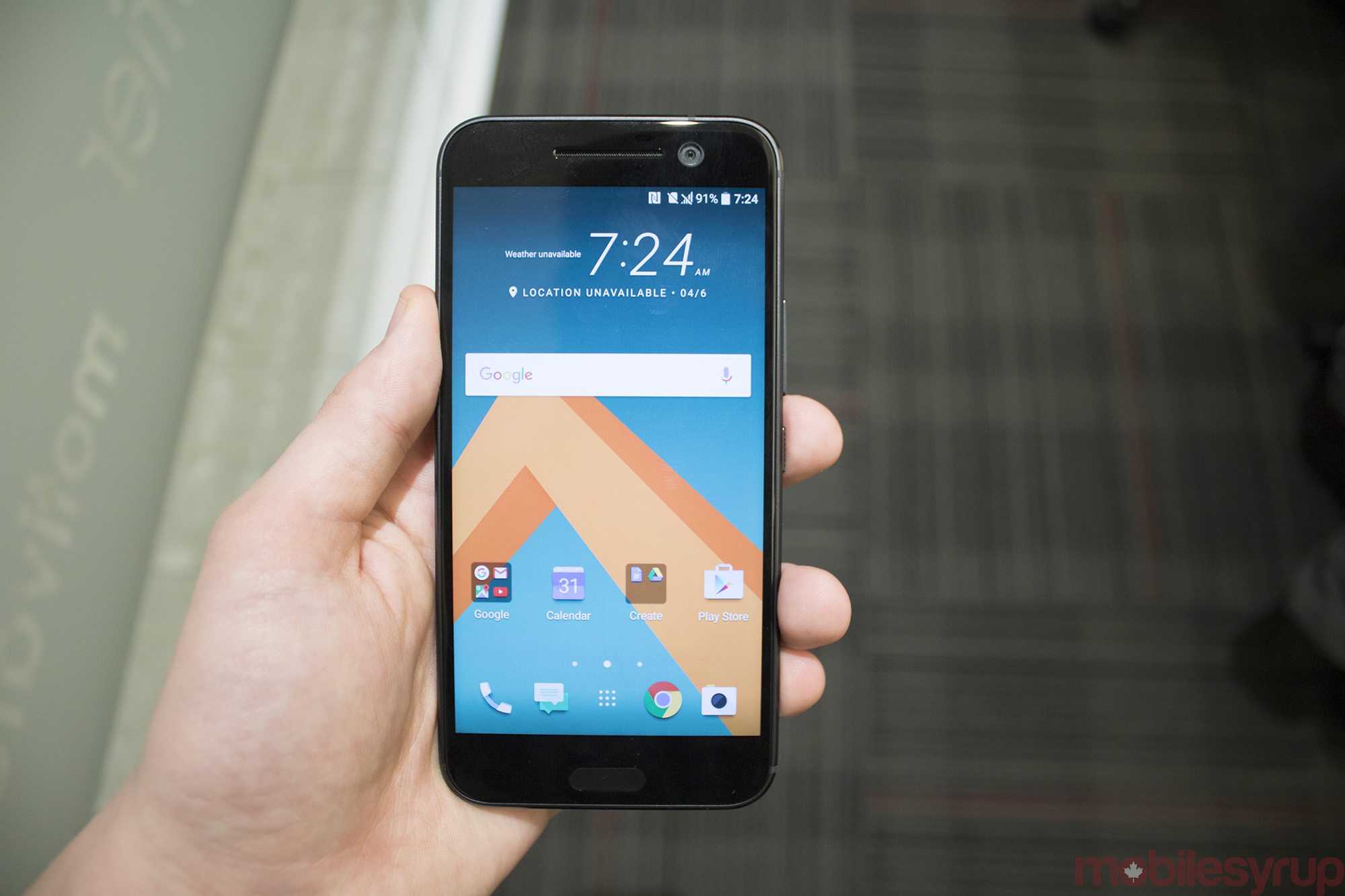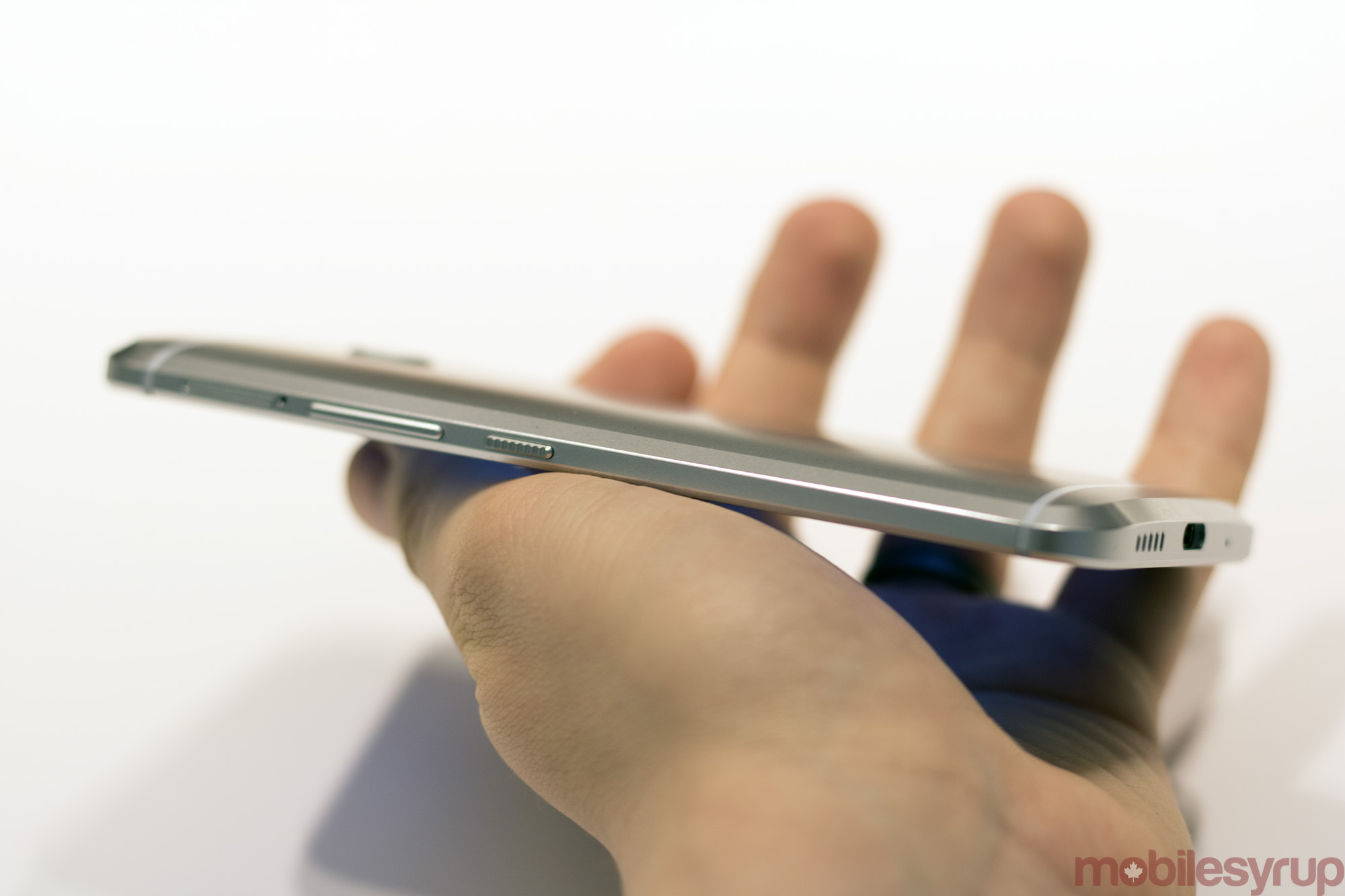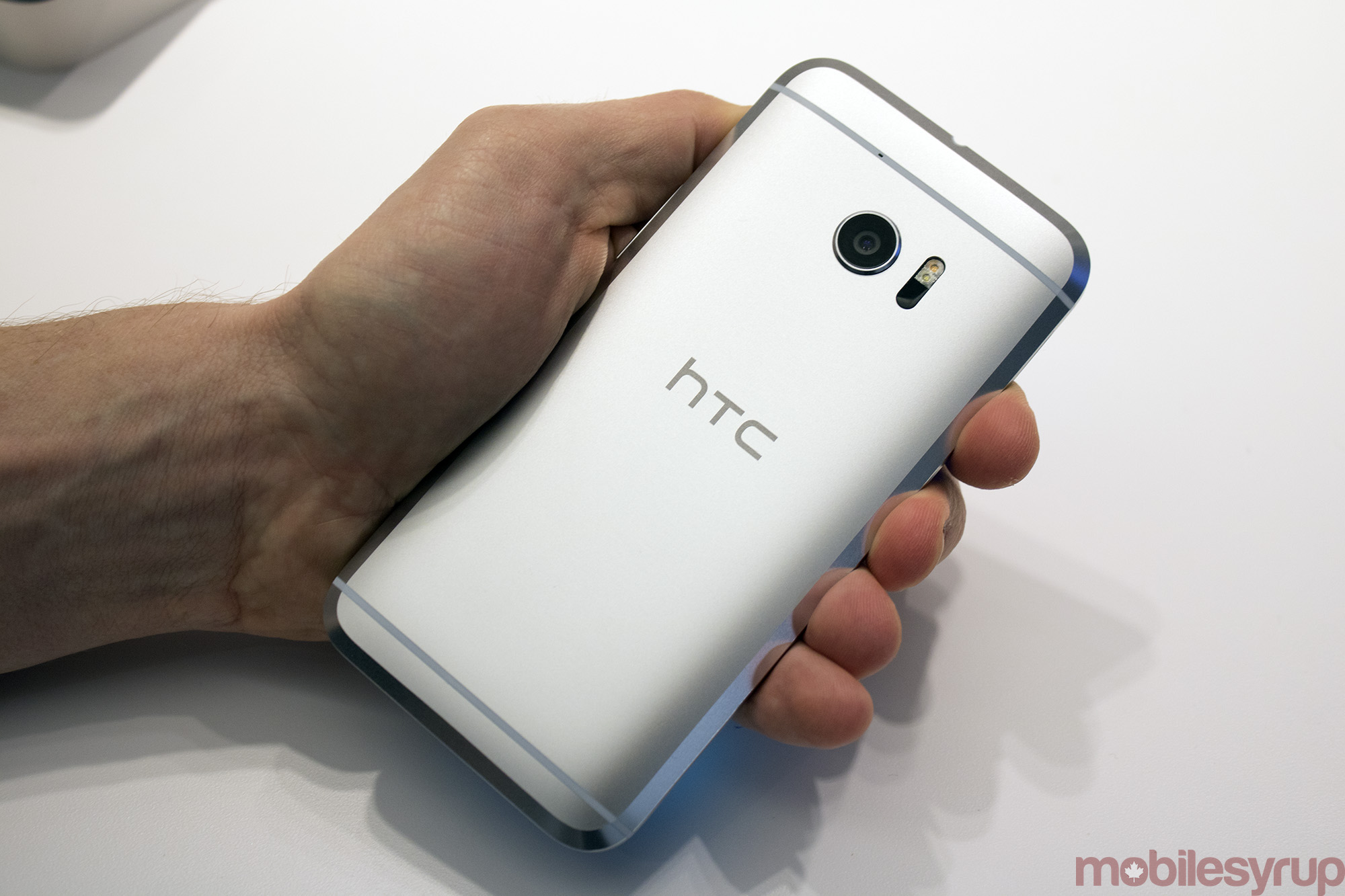
1. Low call volume
By Rose Behar
Despite the 10’s amazing sound performance for listening to music, the sound quality for calling is poor. In any public or outdoor area, it’s impossible to carry on a conversation without plugging in headphones or putting the phone on speaker.
The weak front-facing speaker at the top of the phone seems to be the culprit. It’s possible HTC didn’t focus on the quality of call audio since most users would tend to listen through headphones or on speakerphone, but its an irritating handicap nonetheless.
2. The design is amazing
The HTC is arguably the best looking phone currently on the market, rivalling even the iPhone 6s and S7/S7 edge. The crisp chamfered edges on the brushed aluminum back have all the elegance of James Bond’s Aston Martin DB5, and lend a maturity to HTC’s flagship that was lacking in its forerunner, the M9. The logo is simple, understated and the camera is unobtrusive.
It would be a shame to put a case on this phone, something that can’t be said of most other Android phones. Its weight also gives off the impression of durability – though in reality we have no idea how rugged it is (unlike our other stories, we didn’t put this to the test by lighting it on fire). But even with a case, the 10 would still be an aesthetic standout with its sleek, understated black screen and elongated oval fingerprint scanner in place of a physical home button.
3. It still gets really hot (just like the M9)
While the vast majority of reviewers have commented on the capacity and speed of the Snapdragon 820 processor, there is a downside to the 10’s impressive horsepower.
Much like the M9, the phone gets uncomfortably hot after extended periods of use, particularly with applications that require intensive graphics processing. After about ten minutes of using Snapchat, for instance, the 10 became so hot that it was unpleasant to use and had to be turned off for a while.
4. Freestyle layouts are cool, yo
In addition to a beautiful exterior design, the 10 offers a completely customizable and unique UI experience with freestyle layouts. With this feature, you can make your home screen in to a themed scene, replacing normal app icons with “stickers.” One of our favourites is a pixelated space theme where your camera icon becomes a space ship and your browser becomes a planet.
To turn this mode on, you simply have to press and hold on the home screen and choose “Freestyle layout,” under “Change home screen layout.” There are currently eight themes to choose from, ranging from the childishly adorable to the slightly risqué.
5. Stock Android is good Android
By Igor Bonifacic
Beyond the stunning hardware, one of the most pleasant surprises the HTC 10 brings with it is its software experience. After HTC opened the Pandora’s box that was Android skinning with the introduction of Sense, the company has at long last toned many of its past excess in favour of simplicity and a strong adherence to Google’s own design principles.
There are fun flourishes here and there (as you can see above), but for the most part — with the exception of perhaps a Motorola phone — this is the closest you’ll get to stock Android without purchasing a smartphone from Google directly.
HTC has also replaced many of its own apps in favour of Google mainstays. Gone, for instance, is the company’s gallery app to be replaced by Google Photos. Moreover, the HTC apps that do remain have been redesigned to adhere to Google’s Material Design guidelines, which results in a more coherent experience across the device’s entire software library.
Whether this means updates to the device will be faster to arrive in the future remains to be seen, but for now the 10 is one of the best ways to experience the latest version of Google’s operating system.
6. You’ll want a great set of headphones to go along with it
Sound quality has long been a focus of HTC devices. This is a trend that continues with the 10, though perhaps not in the way most previous HTC device owners might expect.
Following the lead of the A9, the 10 abandons the BoomSound speakers that came to define so many of the company’s previous smartphones. Instead, it focuses on the device’s headphone sound experience. I don’t know about you, but I almost exclusively use my smartphone with a pair of good headphones, and the HTC 10 — more so than almost any other smartphone I’ve used in the past year — makes the most of a good in-ear setup.
Part of it is its more powerful internal sound hardware compared to other smartphones on the market; the other part is a nifty piece of pre-installed software that adjusts the sonic output of the phone based on the user’s hearing.
Using this software, the user can tune the output of their device by either answering a couple of quick questions about their listening habits, or by going through an EQ test.
Going through the EQ test, which takes a couple of minutes at most, is the preferred way to adjust the 10 sonic output. Basically, it involves listening to a bunch of tones, once with each ear, and turning down the volume until they’re barely audible. Once adjusted, there is a noticeable difference (I also found out my hearing is worse in my left ear).
For those that to listen to music and podcasts on their smartphone daily, the HTC 10, paired with a quality set of headphones, is a joy.
7. The ultimate selfie taker
While the HTC 10 has a rear-facing camera that is comparable with many of the latest flagship smartphones on the market, it is perhaps this phone’s front-facing camera that is its most standout feature from a photography standpoint. For the first time on a smartphone, a manufacturer has added optical image stabilization (OIS) to a front-facing camera. In almost all shooting conditions, the addition of OIS will result in sharper images, but where OIS particularly stands out as a great addition to a smartphone camera is in low light conditions.
In those situations, the tech allows the HTC 10’s front-facing camera to take a longer exposure (that is, keep its shutter open longer to allow more light to filter into the camera sensor), leading to night time shots that aren’t a noisy mess.
With so much of modern smartphone use centred around a device’s front-facing camera, it’s surprising this feature didn’t make it to other devices before the 10. For those who love taking selfies, rest assured the HTC 10 is a selfie machine.
8. Super slippery
By Patrick O’Rourke
Thankfully, despite how slippery the 10’s aluminum unibody is, I haven’t managed to drop it on rock hard pavement. The phone has, however, slid out of my hands at home on a number of occasions, landing on the faux hardwood floor of my apartment.
Even with its sloped edges HTC likes to refer to as “chamfered,” the 10 is difficult to get a firm grip on, though it is a joy to look at, especially in bright sunlight. Natural light bounces off the phones sleek design in a unique way that I haven’t seen with a smartphone before.
So if you’re thinking of picking up the HTC 10 and you’re like me, always wanting to keep your mobile device in pristine condition, opting for a case is a must. While we haven’t gone hands on with it yet, early impressions of the 10’s Ice View case seem to be very positive. It’s a little pricey though, coming in at $49 in Canada.
9. Capacitive buttons are frustrating
Capacitive buttons make sense in theory, but in practice, I’ve always found them a little frustrating. Whether I’m using the S7, S7 edge or HTC 10, I always find myself accidentally pressing them with my palm, or another part of my hand.
This occurs even more frequently when using the phone on an off-kilter angle, for example, while laying in bed browsing the internet. And while I have experienced this problem with past flagships featuring capacitive buttons, it occurs significantly more frequently with the 10, leading me to believe that its navigations buttons are perhaps a little too sensitive.
While far from a deal breaker, this is an issue I have a feeling many people will run into with the 10.
10. Battery life is superb
The HTC 10’s battery life is extremely impressive. I’ve actually managed to make it through an entire day and more thanks to its beefy 3,000 mAh size.
I’m not entirely sure why the 10’s battery seems to have lasted considerably longer than other high-end Android smartphones I’ve reviewed this year with similar milliampere-hour size, but it really does. In once instance, I actually forgot to charge the phone in the evening and somehow the battery lasted until about noon the following day, and this is as with moderate use.
The 10 also supports Qualcomm’s Quick Charge 3.0 technology – only the HTC 10, HP Elite x3, LG G5 and HTC One A9 utilize this tech – allowing the phone to charge to 100 percent in approximately an hour. While I personally prefer my smartphone’s battery to last longer instead of charge more quickly, the two features don’t need to be mutually exclusive. So those interested in charging their smartphone quickly, will definitely be pleased with Qualcomm’s Quick Charge 3.0 tech being supported by the 10.
Related reading: HTC 10 review: Back to basics
MobileSyrup may earn a commission from purchases made via our links, which helps fund the journalism we provide free on our website. These links do not influence our editorial content. Support us here.

